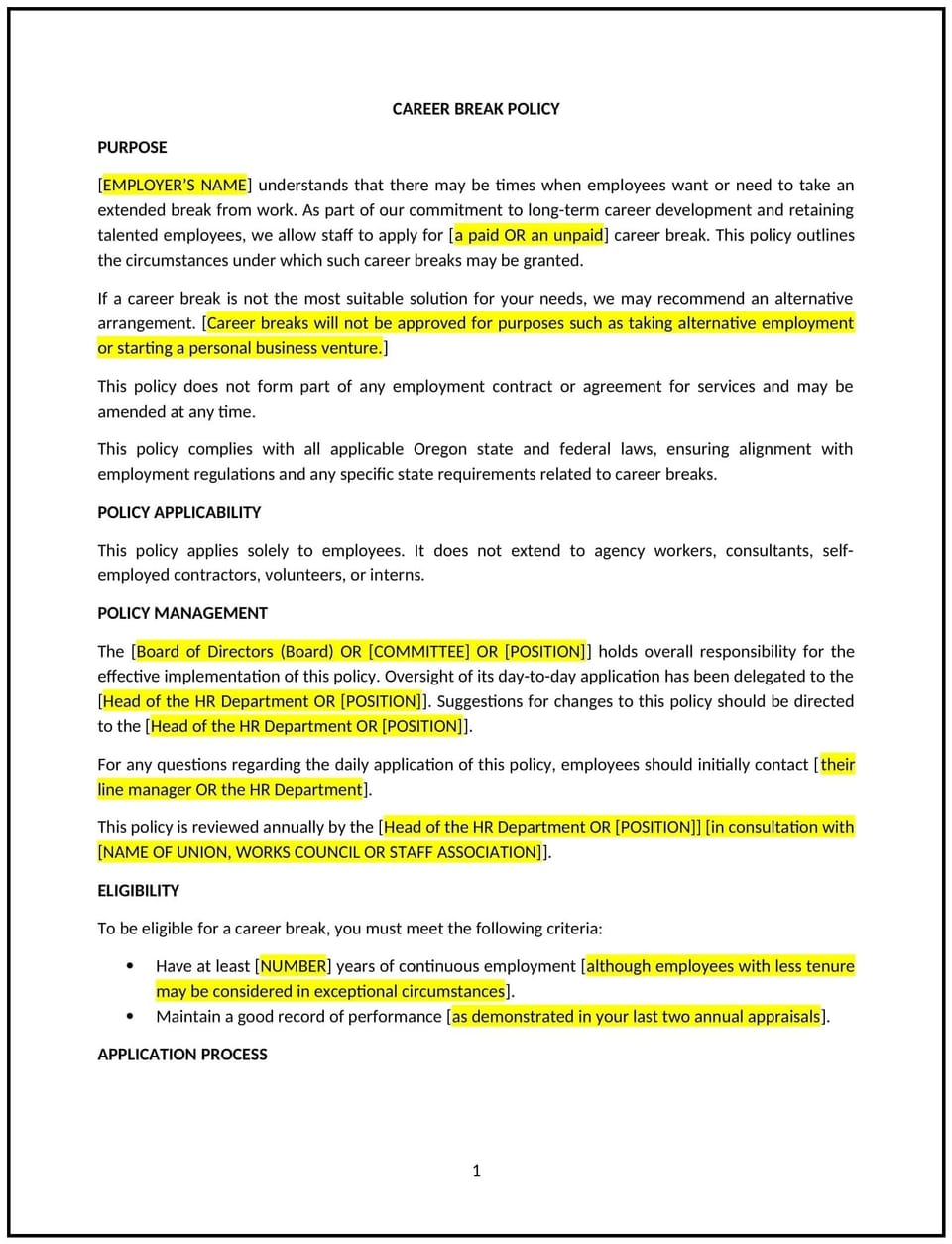Career break policy (Oregon): Free template

Career break policy (Oregon)
This career break policy is designed to help Oregon businesses establish guidelines for employees taking extended leave for personal or professional development. It outlines procedures for requesting leave, duration of leave, and job protection during the break.
By adopting this policy, businesses can support employee growth, enhance retention, and promote work-life balance.
How to use this career break policy (Oregon)
- Define career breaks: Clarify what constitutes a career break, such as extended leave for personal or professional development.
- Set request procedures: Outline steps for employees to request a career break, including required notice and documentation.
- Address duration: Specify the maximum duration of career breaks, typically ranging from 3 to 12 months.
- Ensure job protection: Guarantee that employees will return to the same or an equivalent position after the break.
- Train managers: Educate supervisors on handling career break requests and maintaining workflow during employee absences.
- Review and update: Assess the policy annually to ensure it aligns with evolving business needs and employee expectations.
Benefits of using this career break policy (Oregon)
This policy offers several advantages for Oregon businesses:
- Supports employee growth: Encourages employees to pursue personal or professional development, enhancing their skills and knowledge.
- Enhances retention: Provides employees with the opportunity to take extended leave, reducing turnover and improving loyalty.
- Promotes work-life balance: Demonstrates the business’s commitment to supporting employees’ personal and professional goals.
- Builds trust: Shows employees that the business values their long-term well-being and career development.
- Aligns with best practices: Offers a structured approach to managing career breaks.
Tips for using this career break policy (Oregon)
- Communicate the policy: Share the policy with employees and include it in the employee handbook.
- Provide training: Educate managers on handling career break requests and maintaining workflow during employee absences.
- Monitor compliance: Regularly review career break requests to ensure adherence to the policy.
- Address issues promptly: Take corrective action if career break requests are mishandled or denied improperly.
- Update regularly: Assess the policy annually to ensure it aligns with evolving business needs and employee expectations.
Q: How does this policy benefit businesses?
A: By supporting career breaks, businesses can enhance employee growth, improve retention, and promote work-life balance.
Q: What types of career breaks are typically covered by this policy?
A: This policy typically covers extended leave for personal or professional development, such as further education, travel, or caregiving.
Q: How long are career breaks typically provided?
A: Career breaks typically range from 3 to 12 months, depending on the business’s policy.
Q: What should businesses do if a career break conflicts with business needs?
A: Businesses should work with the employee to find a mutually agreeable solution or adjust the break duration if possible.
Q: How often should businesses review this policy?
A: Businesses should review the policy annually or as needed to ensure it aligns with evolving business needs and employee expectations.
This article contains general legal information and does not contain legal advice. Cobrief is not a law firm or a substitute for an attorney or law firm. The law is complex and changes often. For legal advice, please ask a lawyer.


